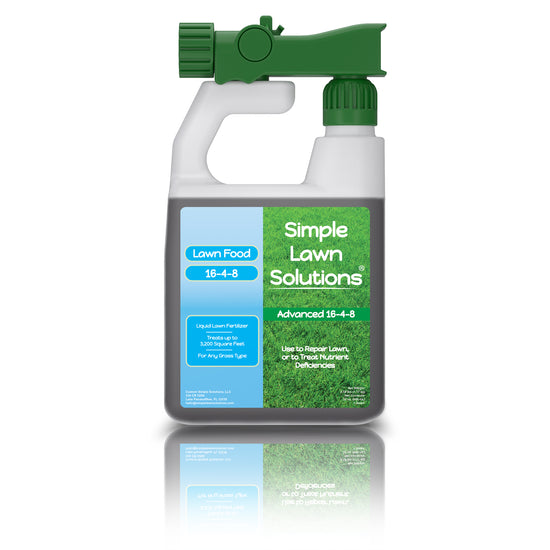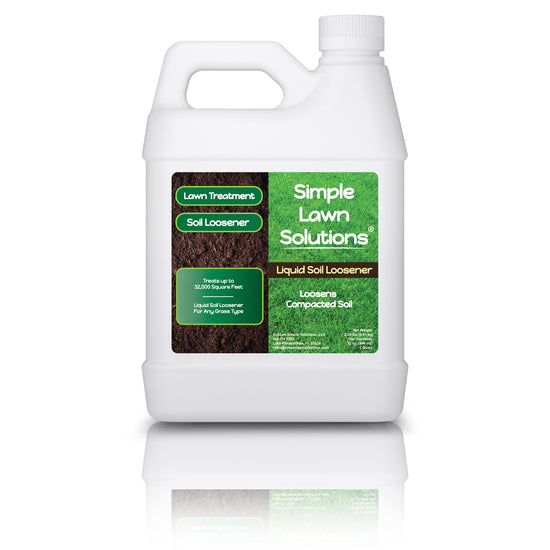Florida’s diverse climate ranges from humid subtropical conditions in the north to tropical conditions in the south, influencing which turfgrass performs best in each region.
Growing Turf in North Florida

North Florida (Panhandle, Jacksonville, Gainesville, Tallahassee, Pensacola)
The northern region of Florida can be colder than the rest of the state and occasionally experiences frost when conditions are favorable for freezing moisture to settle on the plant's leaf tissue. Summers can be very hot and humid, requiring turfgrass that can withstand different conditions throughout the growing season. The soil in this region can be very sandy and acidic, making it challenging to grow turfgrasses that can perform well in soil conditions.
These conditions and circumstances make St. Augustine the leading turfgrass for home lawns in north Florida but Cultivars Floratam and Palmetto are also great for home lawns and common areas. Floratam was developed in 1972 and was explicitly bred to protect against the St. Augustine Decline (SAD) virus, is also known for vigorous growth and drought tolerance- making it a good fit within this region. Although St. Augustine is mostly shade tolerant, Floratam has poor shade tolerance, requiring at least six hours of direct sunlight to perform as designed.
Palmetto St. Augustine grass has a finer leaf texture and deeper, emerald green color, excellent shade tolerance and can perform well with four hours of direct sunlight daily. Color retention is possible on different soil types, making it an excellent choice for the north Florida region. However, Palmetto is more susceptible to fungal infections, such as brown patches, during wet, humid conditions.
Zoysiagrass is a second good option that can perform well in this region. This warm-season grass, introduced from Asia, is known for attractive, dense turf and adaptability to various soil types. Zoysiagrass also exhibits good shade, salt, and traffic tolerance, with three cultivars performing well in the north region of Florida- Emerald, Empire and Zeon Zoysiagrass. Emerald Zoysiagrass is a fine-textured cultivar that exhibits a dark green color that requires little maintenance while demonstrating tolerance to shade, drought, and high temperatures.
Empire Zoysia was bred in Brazil, and is popular in Florida due to its ability to flourish in warm, humid climates. It features wide, green blades forming a dense canopy, offering a similar appearance to St. Augustine grass but with enhanced chinch bug resistance. Zeon Zoysia is known for its fine texture and vibrant green color, high resistance to foot traffic and performs well in sun and shade.

Bermudagrass is well suited for northern Florida but requires higher maintenance and has very poor shade tolerance (except for Tifgrand Bermudagrass). Bermudagrass requires a soil pH between 5.5 and 7.0 to perform best. The turfgrass is drought tolerant but does respond well to irrigation during long, dry periods. When mowing heights range between 0.5” - 1”, the turfgrass grows more dense and thick.
Thatch buildup is a concern and must be managed and removed when the thickness is more significant than 0.5”. Given the required high-profile maintenance, bermudagrass is not the best choice for home lawns in this region.
Centipedegrass (Tifblair) is a low-maintenance option for home lawns in north Florida. It requires minimal fertilization and infrequent mowing, making it ideal for those seeking an easy-to-care-for lawn. Centipedegrass thrives in acidic, sandy soils common in North Florida and exhibits fair shade tolerance, performing best in full sun to partial shade. Centipedegrass has low nitrogen requirements, and over-fertilization can lead to reduced cold tolerance and increased susceptibility to diseases.
Applying 0.4 to 2 pounds of nitrogen per 1,000 square feet annually is recommended, divided into 1 to 3 applications from spring through fall. Avoid fertilizing before April 15th in North Florida to prevent damage from late spring frosts.
Bahiagrass (Argentine, Pensacola) is another popular lawn choice in North Florida, known for its low maintenance requirements, drought tolerance, and adaptability to the region's climate and soil conditions. During active growth periods, bahiagrass should be mowed every 7– 10 days to a height of 3–4 inches. Once established, bahiagrass is drought-tolerant and should be irrigated as needed. Monitor for signs of moisture stress, such as wilting or a blue-gray color, and apply ½–¾ inch of water per application when necessary.
Bahiagrass is generally less troubled by pests than other Florida lawn grasses. However, mole crickets can cause damage by burrowing through the soil and affecting roots, leading to increased susceptibility to drought stress. While bahiagrass is relatively disease-resistant, it can occasionally be affected by dollar spots. Maintaining proper fertilization and watering practices can help prevent disease occurrence.

Central Florida (Orlando, Tampa, Daytona Beach, Lakeland, Ocala)
In central Florida, climate challenges for growing turfgrasses include hot, humid summers with moderate drought risk and occasional cold snaps occuring during winter months. This region has sandy soil with variable pH, making St. Augustine the most common turfgrass for home lawns within this region. Cultivars Floratam, Palmetto, and Seville also perform well within the climate challenges in central Florida.
Zoysiagrass (Empire, Geo, Zeon) is suitable for aesthetic appeal & traffic resistance and bermudagrass (TifTuf, Celebration) is preferred for sports fields & golf courses, but is an attractive lawn grass for high-profile areas. Although, the maintenance level is much higher for bermudagrasses grown in this region. Bahiagrass (Argentine, Pensacola) is best for low-maintenance & roadsides and can be used for home lawns within this region, but it is less attractive and requires less maintenance than other selections.

South Florida (Miami, Naples, Fort Lauderdale, West Palm Beach, Florida Keys)
South Florida does have different climate challenges from the rest of the state. The weather is warm and tropical throughout most of the year, and growth can occur year-round in the most southern locations within the region. The humidity is high, and there is a lot of rainfall during the year. Turfgrass grown along the coastal area will experience higher salt content within the soil and air which can sometimes lead to poor drainage. In the south Florida region, St. Augustinegrass (Floratam, Palmetto, Seville) is best for home lawns and seashore paspalum (SeaIsle 1, SeaStar) is best for coastal and salt-prone areas.
Seashore paspalum has exceptional salt tolerance, is adaptable to different soil conditions, with a recommended mowing height of 1.5 to 2 inches. Regular mowing is essential to prevent scalping and promote dense growth. Once established, seashore paspalum has good drought tolerance and benefits from regular irrigation during extended dry periods. Its high salt tolerance allows for using reclaimed or saline water for irrigation. It requires less nitrogen compared to other warm-season grasses, reducing the need for frequent fertilization.
Zoysiagrass (Empire, Zeon) is used in high-end lawns & golf courses and performs well in this region and requires less fertilization due to its reduced need for nitrogen compared to other turfgrasses. Zoysiagrass is well-suited for South Florida's warm, humid climate, offering homeowners a durable, attractive lawn option.
Where Specific Turfgrasses Are Commonly Grown in Florida


The Best Grass Types to Grow in Florida
St. Augustine is dominant for home lawns statewide but is high maintenance, while bermuda is the go-to for sports fields and golf courses in North and Central Florida. Seashore Paspalum is the best option for coastal and salt-exposed areas, and bahiagrass & centipede are great low-maintenance alternatives for rural & large properties. All grasses that are warm season grasses can be grown in Florida, but some will require higher and more frequent maintenance practices than others. Depending on budget, unique maintenance practices, and time, warm-season grasses can adapt to most locations within each region of Florida. However, ensure that growing the turf you desire for your home lawn is practical.









